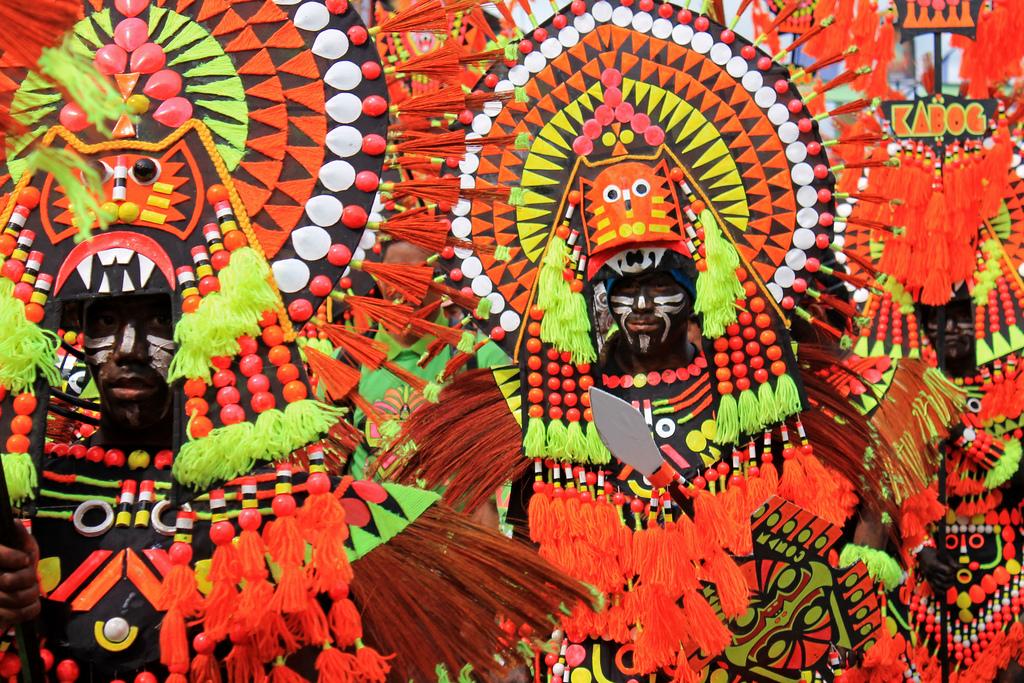
Do you want a different Hala Bira experience? Hear the boom-boom beat of the bass drums and tinkling of the metals and stone while dancing together with the street dancers? Well, it is time to party to the beat of the drums as we head up to Kalibo where the wildest Ati-Atihan Festival is celebrated.
Root of Ati-Atihan:

The name Ati-Atihan means “make-believe Atis” or “pretending to be like an Ati”. It is named after the Ati, the natives of the island before the arrival of the Malay in the 10th century and the Spanish in the 16th century.
Celebrated annually every third week of January or the second Sunday after Epiphany in Kalibo, Ati-Atihan is a unique blend of pagan and religious festivities in honor of the Santo Niño. Magellan brought an image of Santo Niño and gave it as a gift to the native Queen of Cebu in 1521. It was nicknamed "The Filipino Mardis Gras" because the dancing on the rhythms of the drums makes this festival very similar to the Mardi Gras celebration in Rio in Brazil.
Experience Ati-Atihan:
Ati-Atihan is one of the greatest, wildest, and most colorful festivals in the Philippines. Many local and foreign tourists visit Kalibo just to witness this special celebration. The province of Iloilo and many other smaller towns of Panay Island also celebrate festivals during the weekends from mid January to early February, so if you miss the Kalibo festival, you could still experience it elsewhere.
The main feature of the festival and the reasons why many tourists gather to the island is the native dance competitions during the parade. It is the most awaited scene during the last three days of this week-long festival where competitors paint their faces with black soot and dress in the most outstanding costumes. Pitched to rhythmic and mesmerizing drumbeats, the parade allows everyone to participate and dance while shouting “VIVA EL SEÑOR SANTO NIÑO!” It is a phrase which gives honor to the Santo Niño.
Did you know?
1. Every Filipinos knows the phrase “Hala Bira!” which is shouted during Ati-Atihan Festival, but only few have the knowledge of its origin. In the 17th century, Moro raiders from the south attacked Panay. The defenders of the island used artillery with the battle cry Hala Bira ("Hit them!"). The gunpowder blackened their faces and after the fight they looked like the black-skinned Ati. The Santo Nino is credited for saving the locals from the Moros.
2. The first Ati-Atihan was celebrated to seal a peace pact uniting two races and people – the Aetas and the Malays. The two different cultures and spiritual creeds embraced each other and this gave way to an enduring legacy of reconciliation that gave birth to the Philippine nation. The commemoration of the Ati-Atihan Festival in essence has become significant at this point in time when the entire nation is being swept with social, economic and political crises.
Gallery:




Witness the Festival
Cebu Pacific, Philippine Airlines, and Zest Air have direct flights from Manila to Kalibo, Aklan. The fare costs are around 1500 – 2300php. From there, you can hire a tricycle that will bring you to the town that worth about 50-100php. One can also travel by sea via jetty port of Caticlan, port of Dumaguit or port of Washington. The travel time can last 10-12 hours from Manila North Harbor. From Dumaguit’s port, you can ride a jeepney going to Kalibo or from Washington’s port; you can ride a multicab or tricycle.










